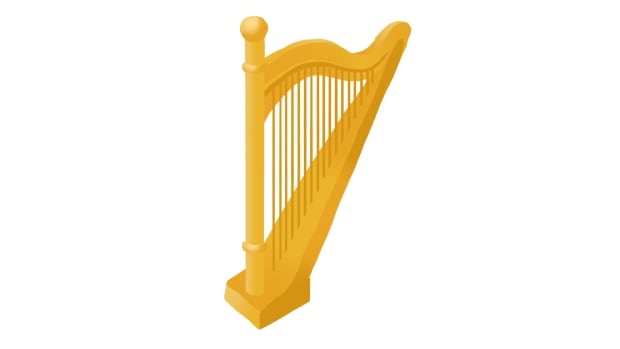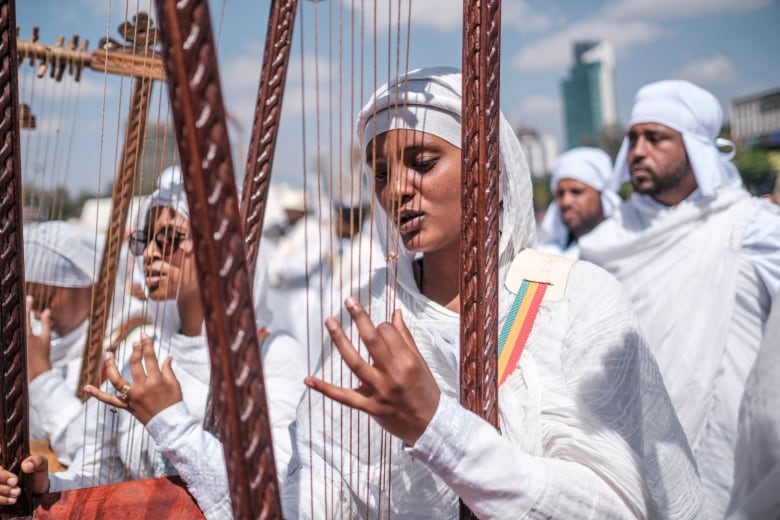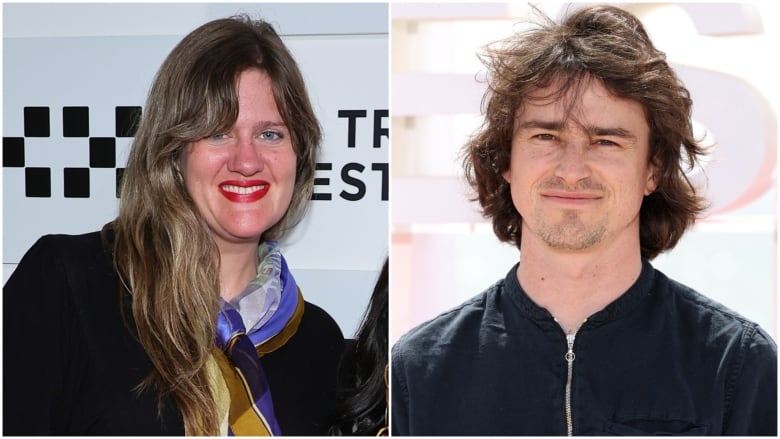
When filmmaker Theo Schear saw harpist Mary Lattimore performing by the river in Austin, Texas in 2019, he was transfixed.
“It was this really magical performance. The harp was just beautiful in the sunset. And I started listening to her music a lot and eventually was inspired to take harp lessons myself,” the Oakland, Calif., filmmaker told As It Happens host Nil Köksal.
“While I didn’t stick with that, it was around the same time that I realized there was no harp emoji.”
So Schear decided to be the harp emoji advocate he wanted to see in the world. And he joined forces with Lattimore to make it happen.
Five years and one 13-page proposal later, the harp emoji has been approved. It will roll out on most devices by late 2024 and early 2025.
“I am very happy to sign off on my endorsement of this emoji,” Lattimore said. “I feel like I’m very lucky to be the representative of us harpists.”
1 of 7 new emojis
Emojis, the tiny illustrations used in mobile messaging platforms, are the evolution of emoticons, the combinations of punctuation typed together to evoke facial expressions and other imagery.
Emojis were added to Unicode, the global standard for encoding and text in computing systems, in 2010. Since then, they’ve become a ubiquitous in online communication.
While they vary in design depending on what device or platform you’re using, they are broadly regulated and standardized by a California-based non-profit body called the Unicode Consortium.
The organization included the harp in its latest batch of newly approved emojis, alongside leafless tree, root vegetable, fingerprint, shovel, splatter, and the relatable “face with bags under eyes.”

Schear says some pedantic online commenters have already taken issue with the emoji’s prototype illustration because the last three strings are all the same length, which is not technically accurate to a real-life harp.
Lattimore, however, gives it a pass.
“I’m fine with it,” she said. “I’m just grateful that it exists at all.”
How does an emoji get made?
The Unicode Consortium considers proposals for new emojis annually. Anyone can submit a pitch, but only a select few make the final cut.
The winning emojis must hit all seven of the consortium’s “factors of inclusion” — which include being distinctive, having multiple potential meanings, and being likely to generate high usage around the world — while avoiding all five “factors for exclusion,” which include being overly specific, already represented, or faddish.

Lattimore says that, in all these contexts, a harp emoji “makes sense.”
“It’s one of the very oldest instruments, and also it can represent a feeling,” she said. “It’s not just an instrument, but it can symbolize, like, heaven or beauty.”
Schear notes the harp plays a role it many different cultures. They’re associated, for example, with the Greek mythological figures Apollo and Orpheus, and they’re also featured on several different flags representing a united Ireland.
These arguments and more are laid out in the official proposal that Lattimore and Schear co-wrote, which, like all emoji proposals, can be found on Unicode’s website.
A great emoji track record
It’s a vigorous process, and one Schear knows well. He is, after all, the man behind such emoji hits as disco ball and pinched fingers — the latter of which is perhaps better known as the Italian hand gesture.
“This is actually, I think, my sixth or seventh emoji,” he said.
His proudest achievement, he says, was his first emoji: the juice box.
“I wrote that proposal based on the idea that most of the beverages available were alcoholic, and that it was not fair to the kids,” he said.
Schear says he’s currently working on a proposal for a “scheming hands” emoji, the gesture made famous by Mr. Burns in The Simpsons.
It could take several more years for that to come to fruition, if it ever does.
But in the meantime, he’s looking forward to seeing how people deploy the harp emoji.
“You never know what people are going to use it for,” Schear said. “You know that eggplant emoji.”